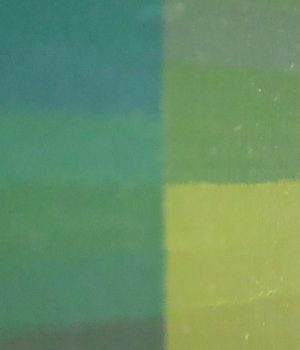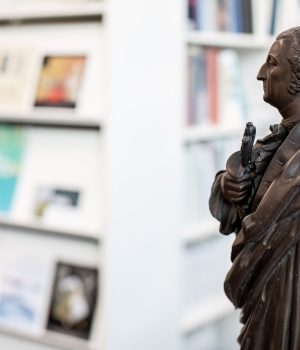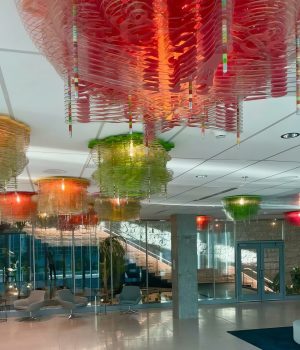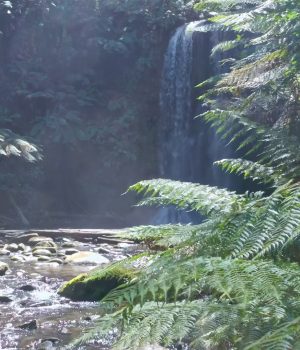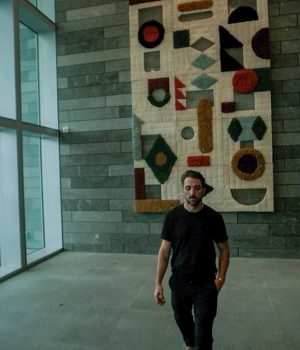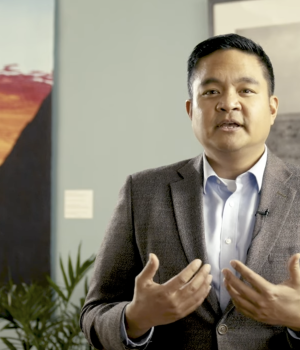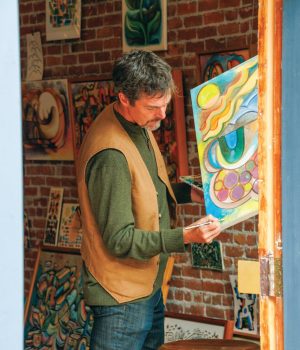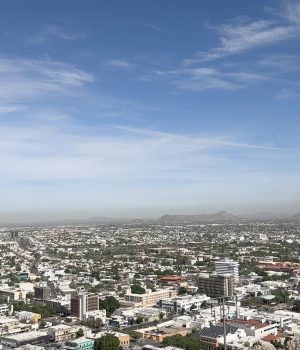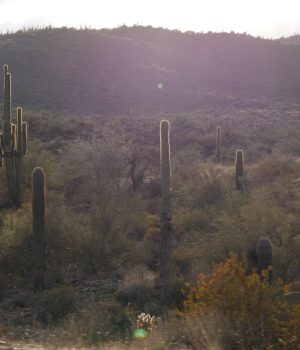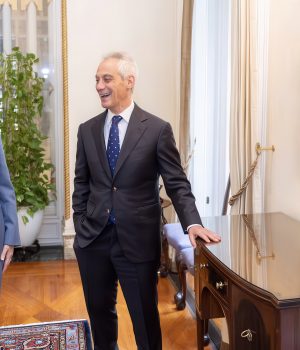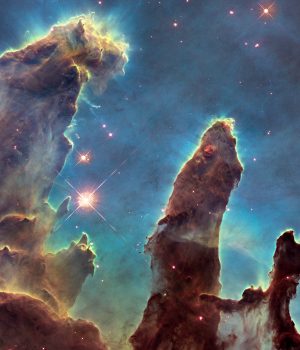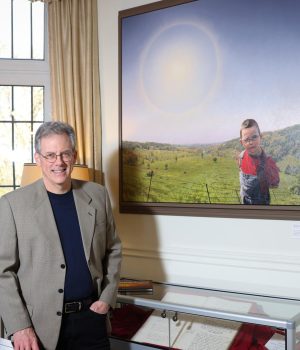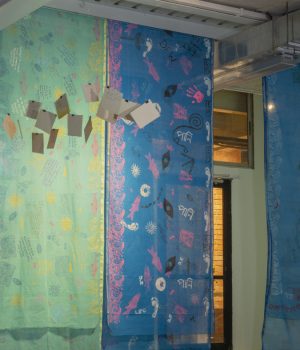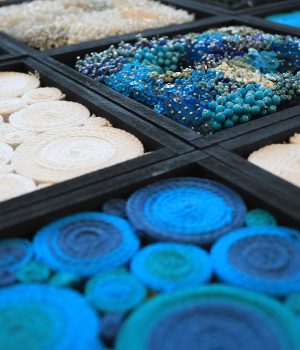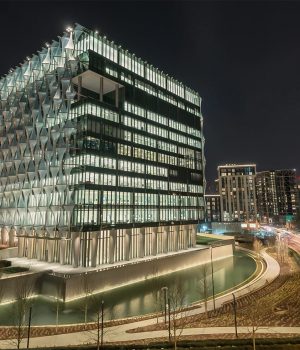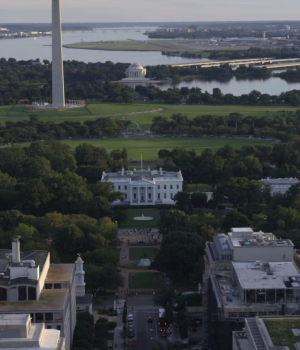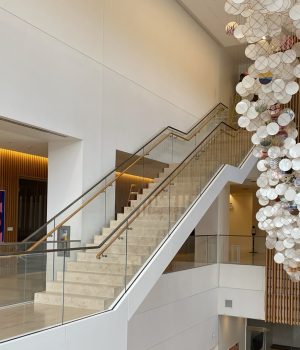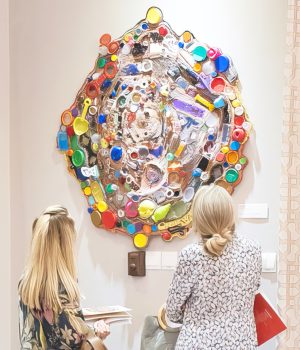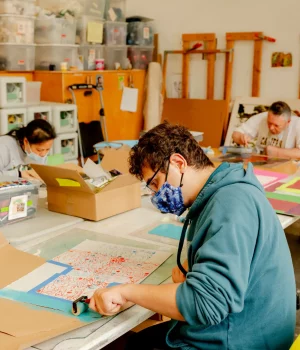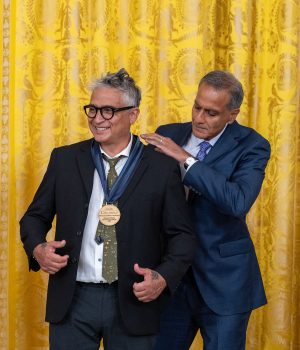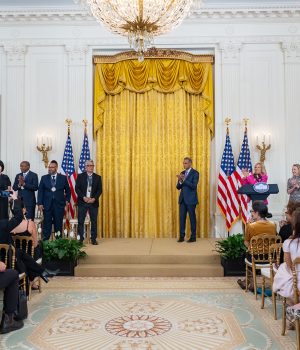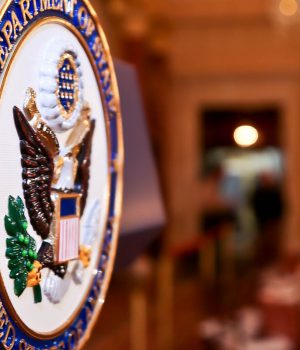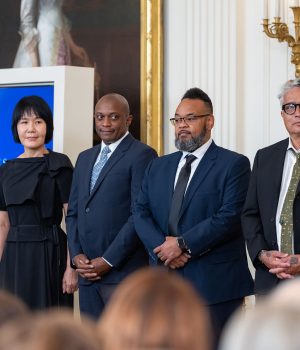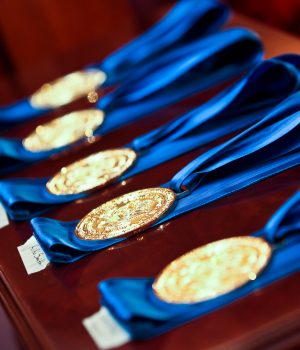00:19
I’m Sarah Winkler.
00:20
I’m a mixed media painter, and I live in Morrison, Colorado.
00:31
I was selected by Ambassador John Pomershine.
00:34
He was very specific about what kind of artists and artwork he wanted for that location in
00:40
Dushanbe, Tajikistan.
00:42
He wanted Colorado artists that specifically focused on the Rocky Mountain landscape.
00:48
Dushanbe is a sister city to Boulder, Colorado, and they also share a very similar landscape.
00:55
So both cities have a backdrop of these rugged, wild, geologically exposed landscapes, the
01:02
Pamir Mountains in Tajikistan and for us, the Rocky Mountains.
01:06
So he picked artists that he could share with Tajikistan and share our landscape and our
01:12
common landscape with each other in the embassy there.
01:17
So he selected a piece of mine, Sundown Canyon Country, which is a painting about the western
01:22
slope of the Colorado Rockies, where the mountains transitioned into a desert landscape.
01:29
So it’s very rugged, exposed geology there.
01:33
So it sort of looks like how I imagined the mountains surrounding Tajikistan.
01:38
We here in Boulder, Colorado, have a wonderful teahouse that I’ve been to, and it was all
01:45
handcuffed by Tajik artisans, about 40 of them who hand carved the building, painted
01:54
it, filled it with sculpture and ceramics.
01:58
And it’s just a beautiful exchange of their art and their history that we have here in
02:03
Boulder to enjoy.
02:05
So I think that’s why the ambassador was wanted specifically to take Colorado artists to Tajikistan
02:14
to show them what what our little world is like here.
02:19
I think it’s fantastic that when art leaves the studio, it can serve many purposes.
02:25
And so what greater purpose than being an ambassador of the United States?
02:30
In a way, for me, showcasing the landscapes of the American West, the exchange of ideas
02:37
through art, the exchange of esthetics has no boundaries.
02:41
So I’ve always felt it was a universal language and it knows no boundaries.
02:47
So many people from many cultures, a world of art can communicate through art and can
02:53
appreciate art.
02:54
So I think it’s wonderful to have to be part of this program and have that have the arts
03:00
serve a higher purpose.
03:08
I’m interested in this branch of geology, which is called geomorphology, and that is
03:13
the history of of the process of landscape building.
03:19
I saw in that moment something that resembled a painting.
03:23
So you’re painting you’re making something out of nothing.
03:27
You and it has a series of actions that build over time and it ends up looking the way it
03:33
does.
03:34
So I sort of dissected that and thought, wow, this is like the process of how a landscape
03:37
is formed.
03:38
The way I paint is I apply paint and I remove it.
03:42
So it’s a technique in geology, it’s deposition of material and eroding of materials.
03:49
So that is the way I paint.
03:51
I put paint down and then I remove it some way to disperse the paint in a way that it
03:56
looks like something you’ve seen in nature
03:59
. I do all my sketches in a collage format and I make all my own papers.
04:08
So those collages and the way I make the papers is I basically mimic the 15 basic patterns
04:14
in nature.
04:15
So nature has a design that repeats itself.
04:19
So like rivers have the same pattern as the branches and trees.
04:24
So that’s called a branching pattern.
04:26
So I will just figure out a way to move materials around to create a pattern like branching.
04:34
And then once I figured that down, I can incorporate that into the painting as a texture.
04:39
And so it helps describe some aspects of that landscape that I’m working on.
04:44
So I do a bunch of experiments in the studio to create those textures.
04:49
Then I scan them and onto archival material papers, and I and I have a whole drawers and
04:56
drawers and drawers full of these papers, which I then use to build these
05:00
miniature collages.
05:02
And those are fun and very time consuming to make.
05:06
So it takes me longer to make that little six inch collage than it does to do a six
05:10
foot painting.
05:11
If you can believe in this.
05:13
So because in the in the collages that I’m working out, my compositions and color and
05:19
texture and and so on
05:22
. So there’s a lot more hours in those little collages.
05:26
And then I take that and develop those.
05:28
Sketches into the large scale paintings and the paintings are all done in acrylic.
05:35
Other than the embedded minerals, but they’re all done in acrylic, but they mimic they have
05:40
a collage esthetic, which I like.
05:42
So it’s this idea of building landscapes again and building layers and building strata into
05:49
a visual painting.
05:51
And it’s got history and it’s got time involved and and quite a long process.
05:58
So my color all comes from nature.
06:01
So I need the trying to match colors that I’m seeing in trees or skies or rocks, or
06:08
I’m more likely physically collecting material in the studio and color matching to the to
06:16
the rocks.
06:17
And so so, for example, I’ve done a whole series on the southwest deserts and I’ve collected
06:22
rocks from the desert plateau out there along
06:26
the the Charma River.
06:28
And so I have eight colors from that, and I’ll mix rocks to match that.
06:33
So when I do a painting about that area, it really resonates with people because they
06:38
know it is the color of their area, which is, again, very different than the color of
06:43
if I’m painting the Teton Mountains in Wyoming
06:45
. So I try and that’s an important aspect for me is to the color relates to the place.
06:53
And so when I’m traveling, I do take color notes and then try and match those colors
06:57
in the studio.
07:05
I’ve always painted nature, so I’ve always been interested in landscape in the natural
07:11
world.
07:12
And when I was studying Odd at university, I also took many electives in science, and
07:20
that was my wow moment.
07:21
I learned that landscapes were not static, but landscapes were in flux and that what
07:27
we see today was not always there.
07:30
And so I found that deeply interesting.
07:32
And so now in my artwork, I go directly into the landscape to experience it.
07:37
But I’m not just looking at what the here and now looks like, but I’m delving into what’s
07:42
three miles beneath my feet.
07:44
What what is the history unraveling of this place?
07:48
I’ve lived out west for 20 years, so I focused all my art in that time on Western landscape,
07:55
particularly the mountain and desert landscape.
07:59
So it just vastly interests me that the desert was once an ancient sea and then, you know,
08:05
the mountains uplifted from that.
08:07
And so it’s this idea of landscapes transitioning through time.
08:12
So through the art, I’m really actually not only interested in what’s so esthetically
08:17
pleasing and so beautiful about what the viewpoint in front of me, but to describe the the history
08:25
of why and how it looks the way it does.
08:28
So through through sort of abstract painting and through mimicking textures and colors
08:34
and patterns and processes of nature, I think that’s that’s how I’m combining the two interests
08:41
together.
08:43
I was born in Manchester, England, but due to my my father’s career in aviation, we’ve
08:49
actually lived abroad for many, many years.
08:53
So we’ve lived Africa, Borneo, America.
08:57
So I’ve always been a foreigner in a foreign place, it feels like.
09:01
But I think that’s why I connect with the environment first.
09:04
Perhaps I just want to know wherever it is I’m living and what the nature is of it.
09:10
So I’ve ever since Africa, I’ve always been interested in different environments.
09:15
My studio is a nine thousand foot peak in the Rocky Mountains, and you are very small
09:21
next to a mountain.
09:22
And so there’s this sense of like the vastness of wilderness and the struggle of wilderness
09:28
and the survival aspects of wilderness.
09:31
So as as a subject for painting, it’s just it’s endless for me, the fascination with
09:36
them.
09:40
I focus on the area probably within 200 miles of where I live because I like to experience
09:50
it directly.
09:51
So I, I, I only go to places that I can, you know, get to easily.
09:57
And because I think you have to go a number of times to see it in all seasons, to see
10:03
it in all kind of weather scenarios, and to get a full picture of the character of the
10:10
place.
10:11
So I like to focus on what’s, I guess, local to me.
10:16
It definitely helps to have a deep and rich knowledge of your environment, your surroundings.
10:23
And I think you need that to translate that into to something that feels truthful in the
10:28
outlook.


